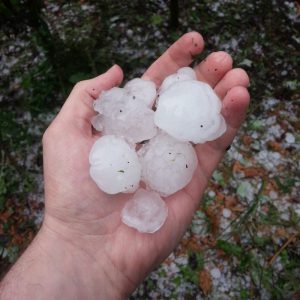Unless you’ve been off on vacation or on a social media and news fast, you’ve probably heard about the tragic death of a number of passengers on a “duck” tour near Branson MO last week. The tourists were enjoying a ride in a tour vehicle called a “duck” which is a cross between a bus and a boat that allows it to run on water and land when it encountered strong winds from a gust front ahead of a complex of thunderstorms. The winds swamped the boat and it sank, killing at least 17 passengers, including nine from just one family. Here’s an article from the Huffington Post in case you have not been following it.
A number of irresponsible or lazy reporters wrote stories claiming that the storm came “out of nowhere”. This is the standard line they use when they don’t want to take the time to look at what the National Weather Service and other outlets were actually reporting. My friend David Moran has written an excellent discussion of what actually happened and when that you can read at his web site at https://davidmoranweather.com/2018/07/it-didnt-strike-without-warning-the-table-rock-boat-accident/. As you can see after reading that, there were plenty of watches and warnings about severe weather well in advance of the storm, and there really was no excuse for their decision to continue with the tour. I’m sure we will hear plenty more about that in the next few weeks.
This brings up the larger question of what YOU are doing regarding severe weather when you plan outdoor activities or conferences that require people driving to the facility. Many professional and college sports teams use commercial weather monitoring software or a meteorologist during the event to keep track of the potential for lightning or strong winds. I’ve done it on occasion at University of Georgia football games. The fans don’t like it when you have to shut down the game for 30 minutes or more due to lightning, but the event managers are just being prudent and trying to keep the fans and players safe. Most fatalities at sporting events and outdoor concerts are preventable, according to UGA’s Dr. Marshall Shepherd in a recent Forbes.com article here. The American Meteorological Society also has a statement about it at https://www.ametsoc.org/index.cfm/ams/about-ams/ams-statements/statements-of-the-ams-in-force/weather-safety-at-venues-and-public-gatherings/.
If you plan or participate in outdoor events like 4-H camps, field days, or county fairs, or even if you work regularly outside, then you need to make sure that you know both ahead of time what kinds of weather are likely to occur and get current warnings for severe weather in time to get participants to a safe place (and you need to know where those safe places are, too). Even in relatively light winds of only 25 mph or so, things like bounce houses can be lofted into the air, injuring kids inside or people outside. Strong winds can cause all kinds of havoc with equipment outdoors that is not properly fastened down and can easily injure or kill people. And note that these winds are just as likely to come from severe thunderstorms as tornadoes, so don’t downplay the severity of severe thunderstorm warnings compared to tornado warnings–they can be equally deadly, and severe thunderstorms include both strong winds and large hail rather than just wind damage due to tornadoes. Watch this Weather Channel video on why you should not ignore these warnings at https://weather.com/safety/thunderstorms/news/severe-thunderstorm-warnings-why-they-matter.
Here in the Southeast we can get severe weather any time of year, so I hope all of our extension agents are well versed on what to do when severe weather is likely and are prepared ahead of time to act immediately when a warning is issued. We want to keep all our citizens safe and sound. The time to plan is now, not when severe weather is already on the way.
